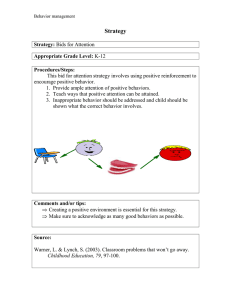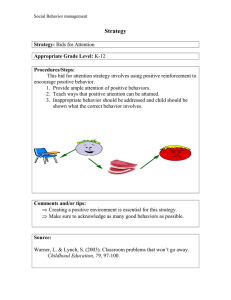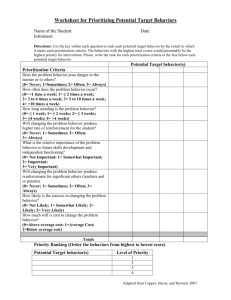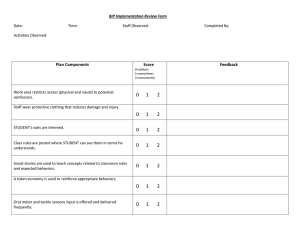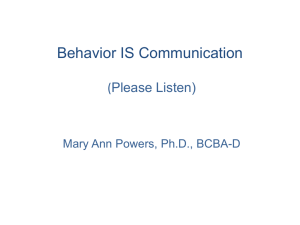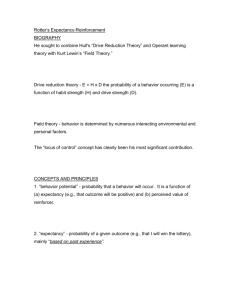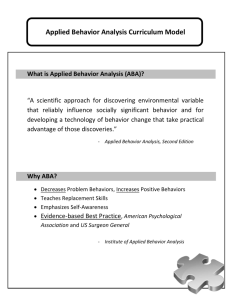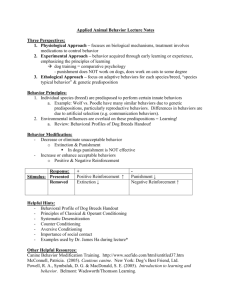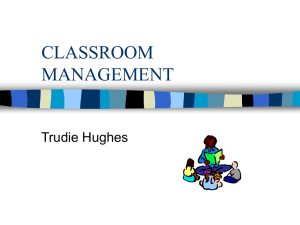Parental Behavior
advertisement
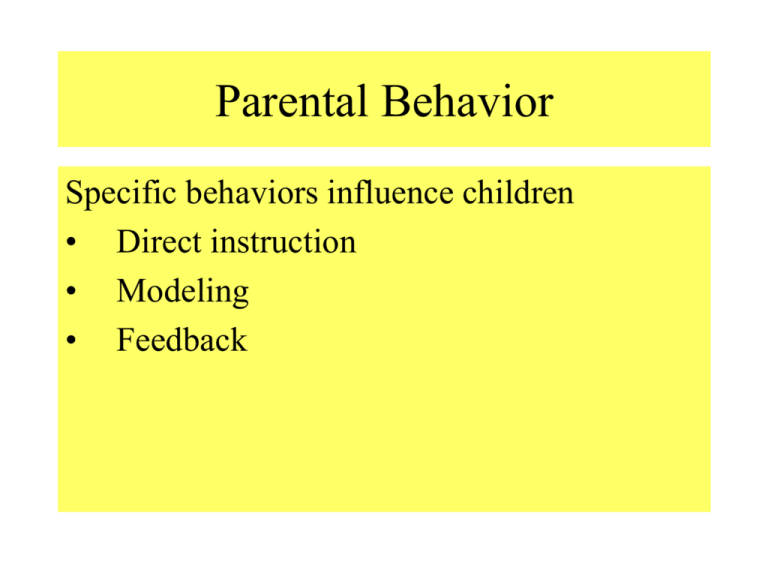
Parental Behavior Specific behaviors influence children • Direct instruction • Modeling • Feedback Direct Instruction • Explain to children what to do…. • WHEN • WHY Explain • Explain the link between emotion and behavior. – Coach behavior – Explain alternatives – Explain how our actions affect others Coaching • Particularly powerful influence when paired with modeling. Modeling • Learning by observing parent – Learn what should be done – Learn what should not be done (counterimitation) • Inhibition—if we see someone punished for a behavior we are less likely to exhibit that behavior • Disinhibition—increase in observed behaviors (parents fight so child fights) Feedback • Reinforcement—increases likelihood of repeating the behavior • Punishment—decreases likelihood of repeating behavior while the punisher is present • Negative reinforcement trap—often with mother and son Negative Reinforcement Trap • Mom: “Take out the trash.” • Son: argues, complains, whines • Mom: gives in Punishment • Immediate • Consistent • Explain why and what to do to avoid it next time • Warm relationship with punisher Time Out • • • • Use caution Purpose of time out Use induction Learn alternative behaviors for future use So…Influence Children by • Direct instruction • Modeling behavior that is valued • Do not model behavior you do not want the child to learn • Giving feedback • Using authoritative parenting style Interactive Influences • Parent and child respond to each other and elicit behaviors • Influence of temperament • Patterns of interaction emerge Cultural Variations in Parenting • Warmth • Control Styles of Grandparenting • • • • Formal Fun-seeking Distant Dispensing-familywisdom • Surrogate parent Summary • • • • • • Parents influence behavior of children. Children influence behavior of parents. Wise adults are aware of those influences Consider temperament Consider culture Consider grandparents’ role as family members
